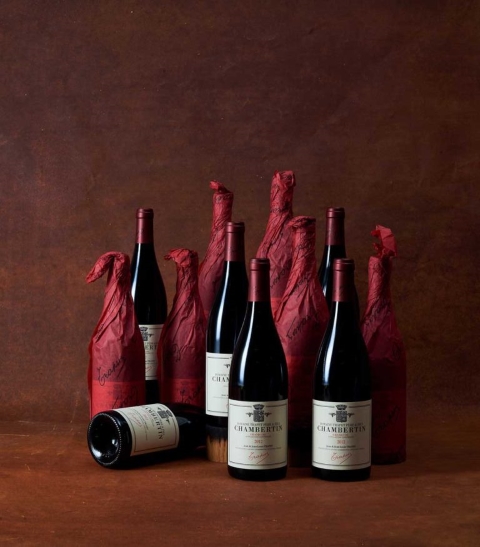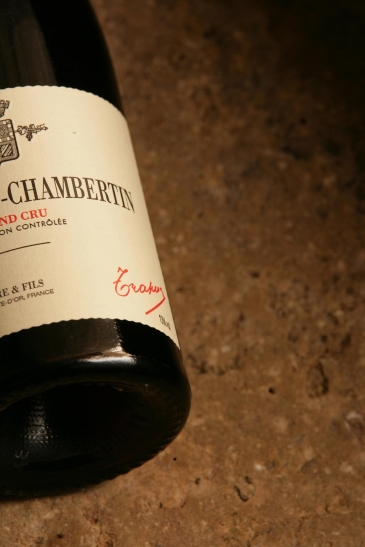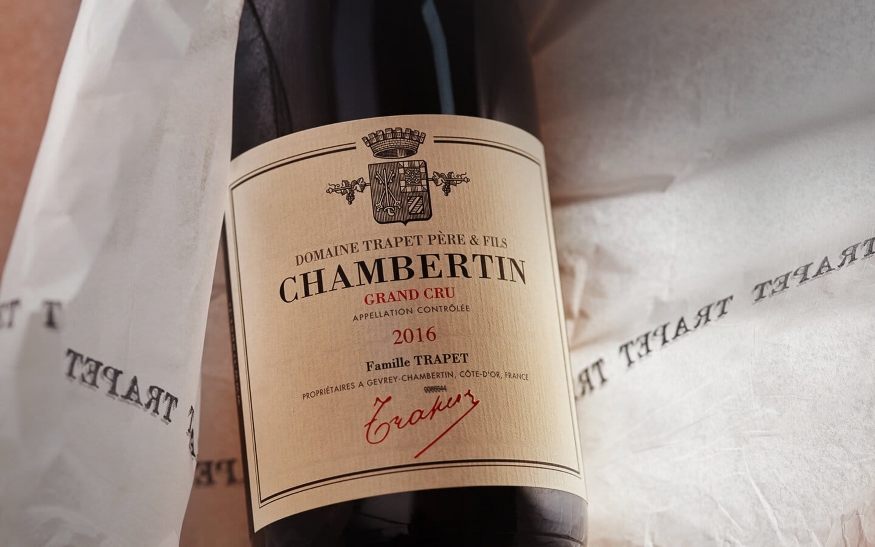
COUNTRY
France

REGION

GRAPE VARIETY
Pinot Noir

VINTAGE
2021
AVAILABLE STOCK: 6 BOTTLES

COUNTRY
France

REGION

GRAPE VARIETY
Pinot Noir

VINTAGE
2021
Country: France, Burgundy, Côte de Nuits
Grape Variety: Pinot Noir 100%
Alcohol Content: 13.5%
Discover the excellence of the Latricières-Chambertin Grand Cru Rouge 2021, a prestigious wine from Domaine Trapet Père et Fils. Originating from one of the greatest terroirs of Burgundy, this Grand Cru offers a unique sensory experience with complex aromas of red fruits, spices, and mineral notes. Its richness and elegance make it a perfect choice for connoisseurs and lovers of fine wines.
Tasting Notes: Intense and brilliant ruby color. Ripe red fruits like black cherry and blackberry, truffle, spices, and undergrowth. Round attack with velvety texture, well-integrated tannins, and a long, elegant finish with freshness and characteristic mineralityCharacter: Complex, refined, and expressive
Food Pairing: Game birds (e.g., roasted partridge), Beef fillet with morels, Soft cheeses (e.g., Époisses or aged Brillat-Savarin)
Viticulture & Winemaking: Domaine Trapet Père et Fils, located in the heart of Burgundy, is a key reference in French viticulture. This family estate, managed by Jean-Louis Trapet since 1995, has passionately cultivated its vineyards on exceptional terroirs for five generations. Combining centuries-old traditions with modern techniques, the Domaine follows biodynamic principles to ensure the wines` purity and finesse.
The Latricières-Chambertin Grand Cru Red 2021 is a product of this commitment. Produced from the iconic Pinot Noir grape, some of the vines date back to 1938, contributing to the wine`s exceptional complexity and depth. Each sip tells the story of a unique terroir, elevated by the Domaine’s expertise.
“From the first buds to the harvest, the grapes are accompanied but never forced.” - Jean-Louis Trapet“Man or the winemaker comes and goes. What remains is the soil! We just pass by!” - Andrée Trapet

SHIPPING FEES
For orders €100,00 and
above we deliver free to
your place
For orders below €100,00 delivery
charge €10,00 within city limits.
Country: France, Burgundy, Côte de Nuits
Grape Variety: Pinot Noir 100%
Alcohol Content: 13.5%
Discover the excellence of the Latricières-Chambertin Grand Cru Rouge 2021, a prestigious wine from Domaine Trapet Père et Fils. Originating from one of the greatest terroirs of Burgundy, this Grand Cru offers a unique sensory experience with complex aromas of red fruits, spices, and mineral notes. Its richness and elegance make it a perfect choice for connoisseurs and lovers of fine wines.
Tasting Notes: Intense and brilliant ruby color. Ripe red fruits like black cherry and blackberry, truffle, spices, and undergrowth. Round attack with velvety texture, well-integrated tannins, and a long, elegant finish with freshness and characteristic mineralityCharacter: Complex, refined, and expressive
Food Pairing: Game birds (e.g., roasted partridge), Beef fillet with morels, Soft cheeses (e.g., Époisses or aged Brillat-Savarin)
Viticulture & Winemaking: Domaine Trapet Père et Fils, located in the heart of Burgundy, is a key reference in French viticulture. This family estate, managed by Jean-Louis Trapet since 1995, has passionately cultivated its vineyards on exceptional terroirs for five generations. Combining centuries-old traditions with modern techniques, the Domaine follows biodynamic principles to ensure the wines` purity and finesse.
The Latricières-Chambertin Grand Cru Red 2021 is a product of this commitment. Produced from the iconic Pinot Noir grape, some of the vines date back to 1938, contributing to the wine`s exceptional complexity and depth. Each sip tells the story of a unique terroir, elevated by the Domaine’s expertise.
“From the first buds to the harvest, the grapes are accompanied but never forced.” - Jean-Louis Trapet“Man or the winemaker comes and goes. What remains is the soil! We just pass by!” - Andrée Trapet

SHIPPING FEES
For orders €100,00 and
above we deliver free to
your place
For orders below €100,00 delivery
charge €10,00 within city limits.














